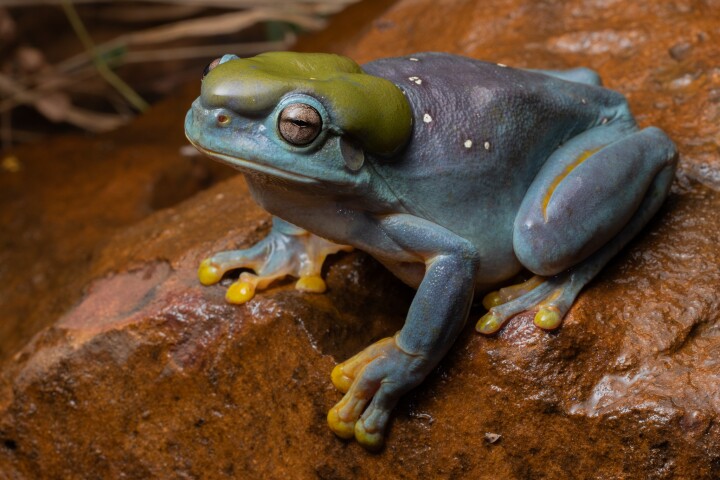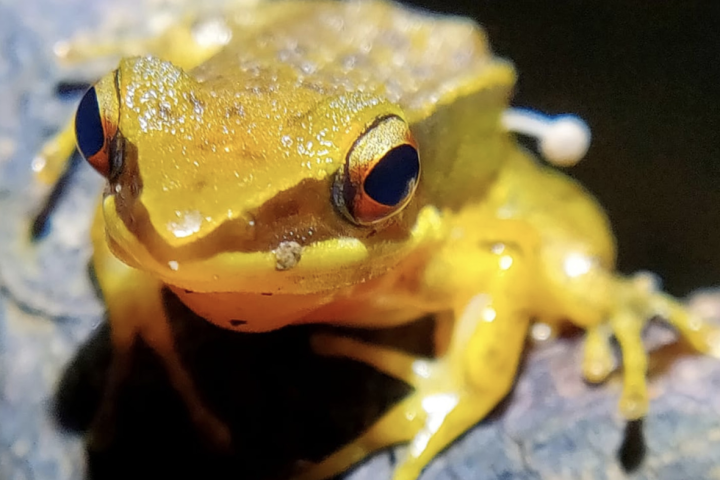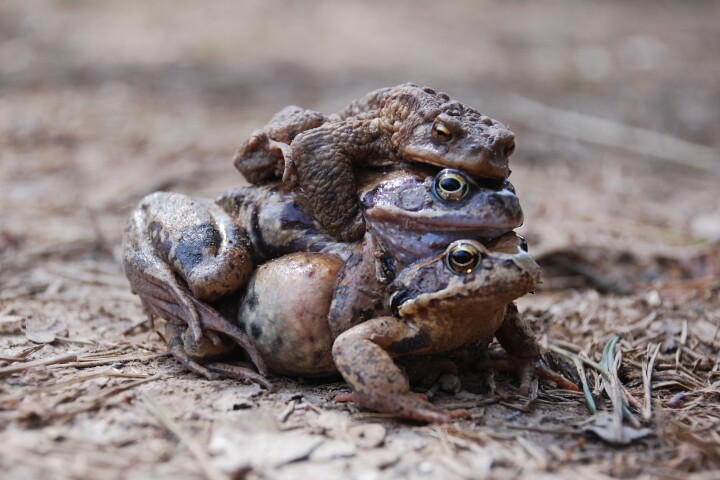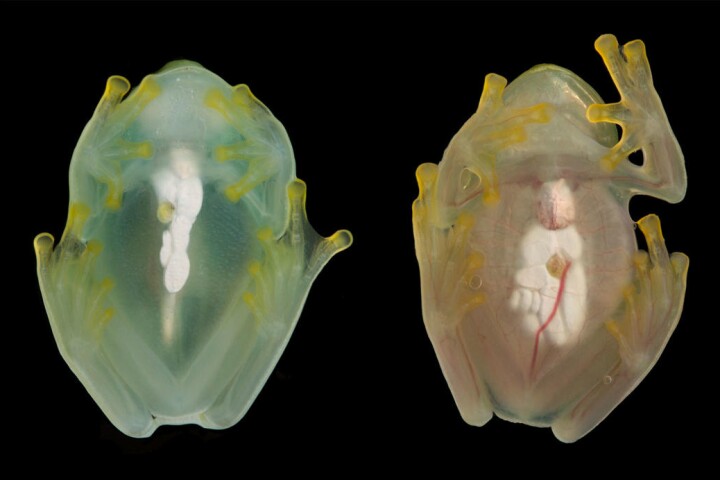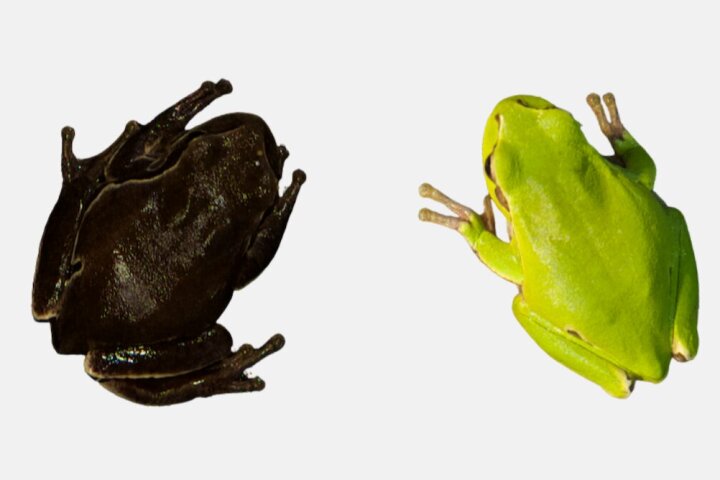Frogs
-
An amphibian has lived up to its name, swapping out its usual green coloring for bright blue, in the first-ever record of a magnificent tree frog with this appearance. It's stunned scientists, who know they're unlikely to see this again.
-
A healthy frog has been spotted with a mushroom growing out its side, the first time such a growth on live animal tissue has been seen. Not surprisingly, it stunned scientists (and had us wondering if this is how a real-life The Last of Us begins).
-
During the European frog's 'explosive breeding' sessions, it's not uncommon to see multiple males pile on a single female. Now, they're fighting back, performing some Oscar-worthy acting to convince their pushy mates that the coupling is a dead end.
-
When glassfrogs sleep, they turn their bodies transparent in order to evade predators. Scientists have now discovered that they do so by moving their red blood cells into their liver – and the finding could have implications for human medicine.
-
Evolution occurs as species adapt to environmental pressures, and few environments exert pressures like the Chernobyl exclusion zone. A new study shows evolution in action as frogs within the radioactive region are turning blacker than those outside.
-
Chronic skin ulcers are notoriously slow to heal, but an otherwise-wasted material may soon help change that. Scientists at Singapore's Nanyang Technological University have developed a new regenerative wound dressing, and it's made from frog skin.
-
Animals like axolotls can regrow fully functional replacements for lost limbs. In a breakthrough new study, scientists have demonstrated how one dose of a drug cocktail can regrow lost limbs in frogs that don’t normally have regenerative abilities.
-
Scientists have developed first-of-a-kind "Xenobots" from frog cells with the ability to self-replicate, a technology that could find use in regenerative medicine and and reveals a type of biological reproduction never before observed in science.
-
The people of Singapore consume a lot of fish, and – perhaps surprisingly to some of us – a lot of frog meat. Scientists have now developed a method of converting the waste from both foods into a material that helps bone to regrow.
-
A number of hearing aids are now able to amplify one person's voice while filtering out distracting background voices. Well, it turns out that female tree frogs are able to perform a similar task, in order to hear the mating calls of males.
-
It can be hard to determine if an animal is extinct or just really good at hiding. A new study shows how environmental DNA can help the hunt, with several missing frog species rediscovered in Brazil, including one that hasn’t been seen in 50 years.
-
The line between robots and living organisms is beginning to blur. Researchers at the University of Vermont and Tufts University have now essentially created new creatures from frog cells, complete with programmable behaviors.
Load More
